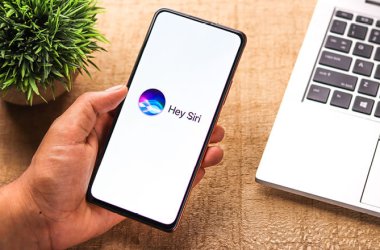 Apple will launch an LTE-capable handset just as soon as an affordable, thinner chipset solution is available, analyst house IHS iSuppli has said.
Apple will launch an LTE-capable handset just as soon as an affordable, thinner chipset solution is available, analyst house IHS iSuppli has said.
Following on from the recent iPhone 4S announcement the company said that it expected Apple to launch an LTE-capable iPhone either late next year or perhaps in mid-2013.
Though some pundits had suggested the next-generation iPhone could be LTE-capable, Apple’s iPhone 4S does support HSPA (High-Speed Packet Access) networks as well as having EvDO (Evolution-Data Optimised) support.
Theoretically, the iPhone 4S offers 5.8Mbps upload speeds with 14.4Mbps download speeds, though much would depend on the mobile carrier’s network and strength of signal. Apple’s Phil Schiller said that competitors describe those speeds as 4G, but that Apple is “not going to get into a debate about what’s 4G and what isn’t.
“As Apple always does, the company selected features for the iPhone 4 that are designed to deliver a superior customer experience, rather than to provide technology for technology’s sake,” said Francis Sideco, senior principal analyst, wireless communications, for IHS.
“Because of this, Apple declined to offer an LTE-enabled iPhone that would have been more expensive, larger and more power hungryand instead opted to introduce a device that delivers nearly the same wireless data speed, but with a superior user experience,” Sideco added.
LTE, or Long-Term Evolution technology, is a wireless standard often bracketed in with 4G (fourth-generation) services, along with Mobile WiMax and HSPA+. LTE is potentially capable of 50Mbps upload speeds and 100Mbps download speeds, though an enhanced version, LTE Advanced, is theoretically ten times faster.
In comparison, Mobile WiMax is theoretically capable of 56Mbps uploads and 128Mbps downloads while HSPA+ could deliver data at a rate of 84Mbps on the downlink and 22Mbps on the uplink when using a multiple antenna technology known as MIMO (multiple input, multiple output).
Apple’s concerns over balancing battery life with performance have also been shown in its use of dual-core processors and dual-core graphics in the iPhone 4S, iSuppli said.
“The use of the A5 should increase the performance significantly, and will put Apple right at the leading edge of the dual-core trend in smartphones. In addition to dual processors, the A5 integrates dual-core graphics,” Sideco said.
“This is critical in achieving faster performance while minimising power consumption essential to maintaining long battery life,” Sideco concluded.





